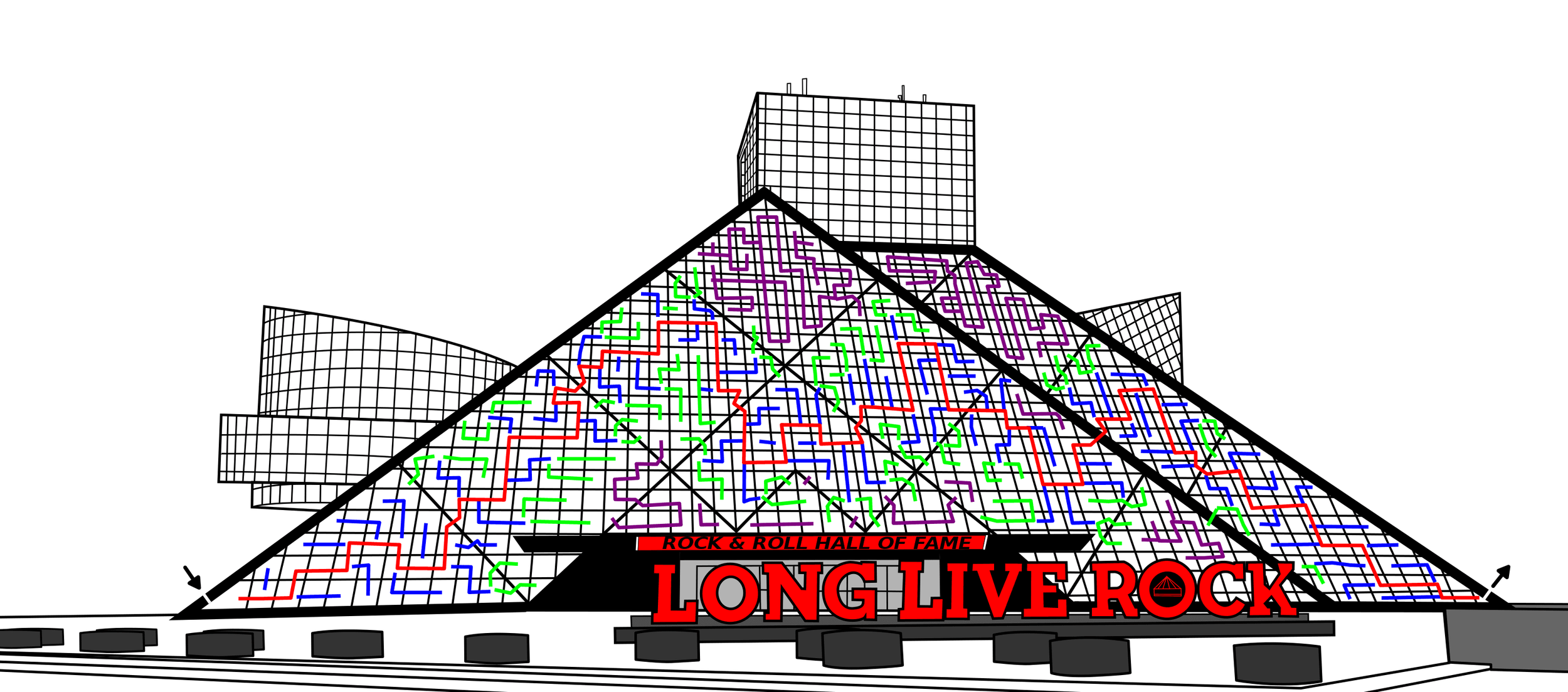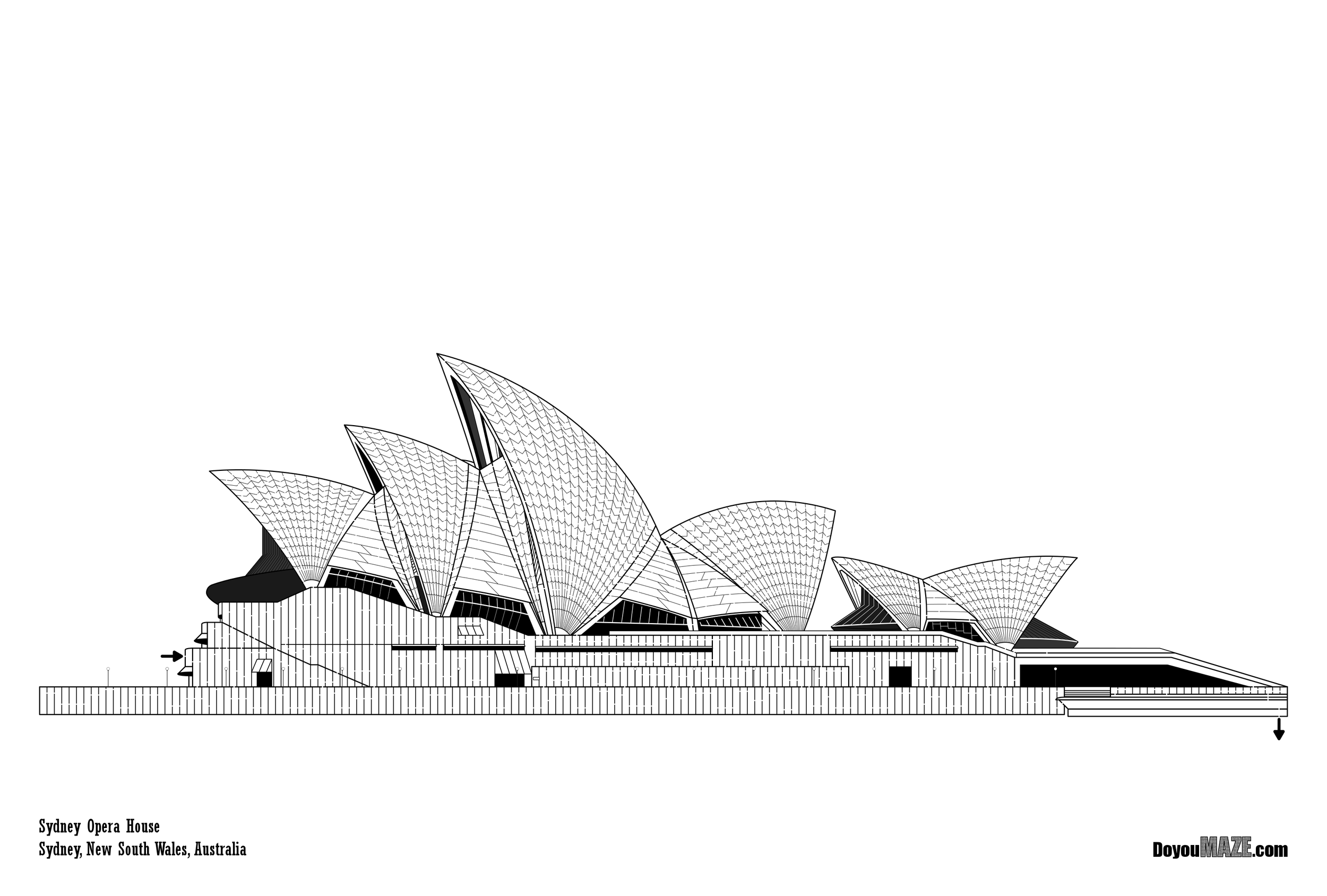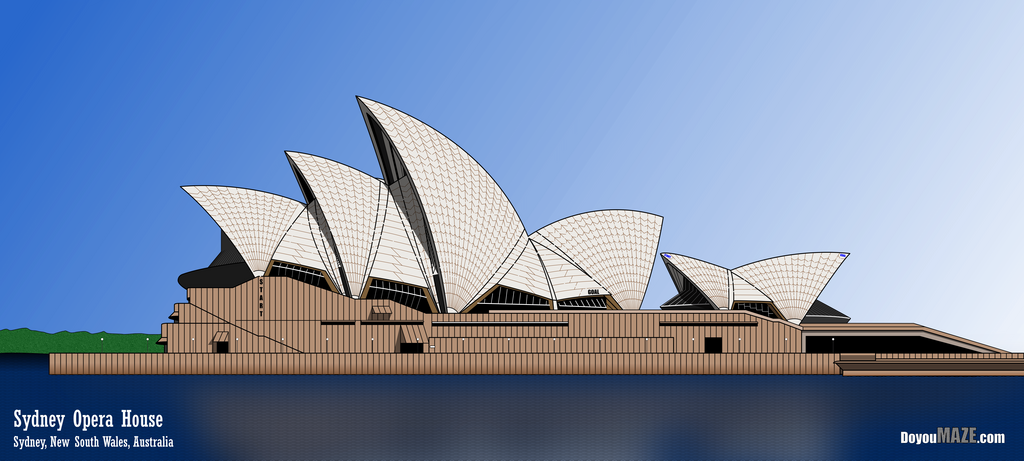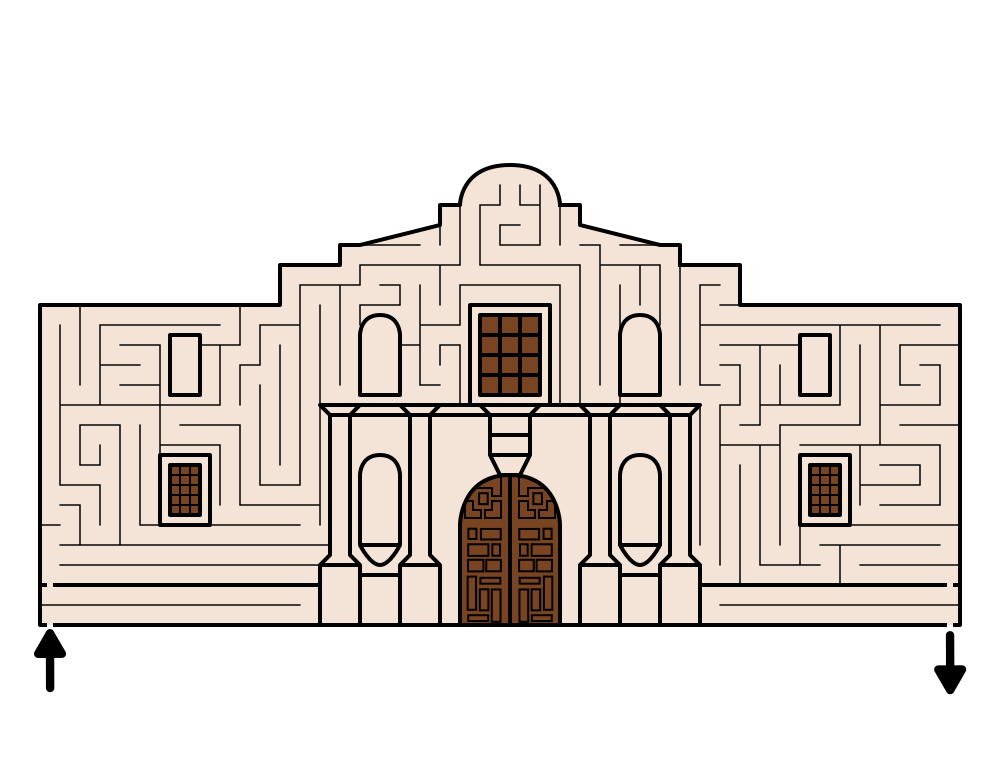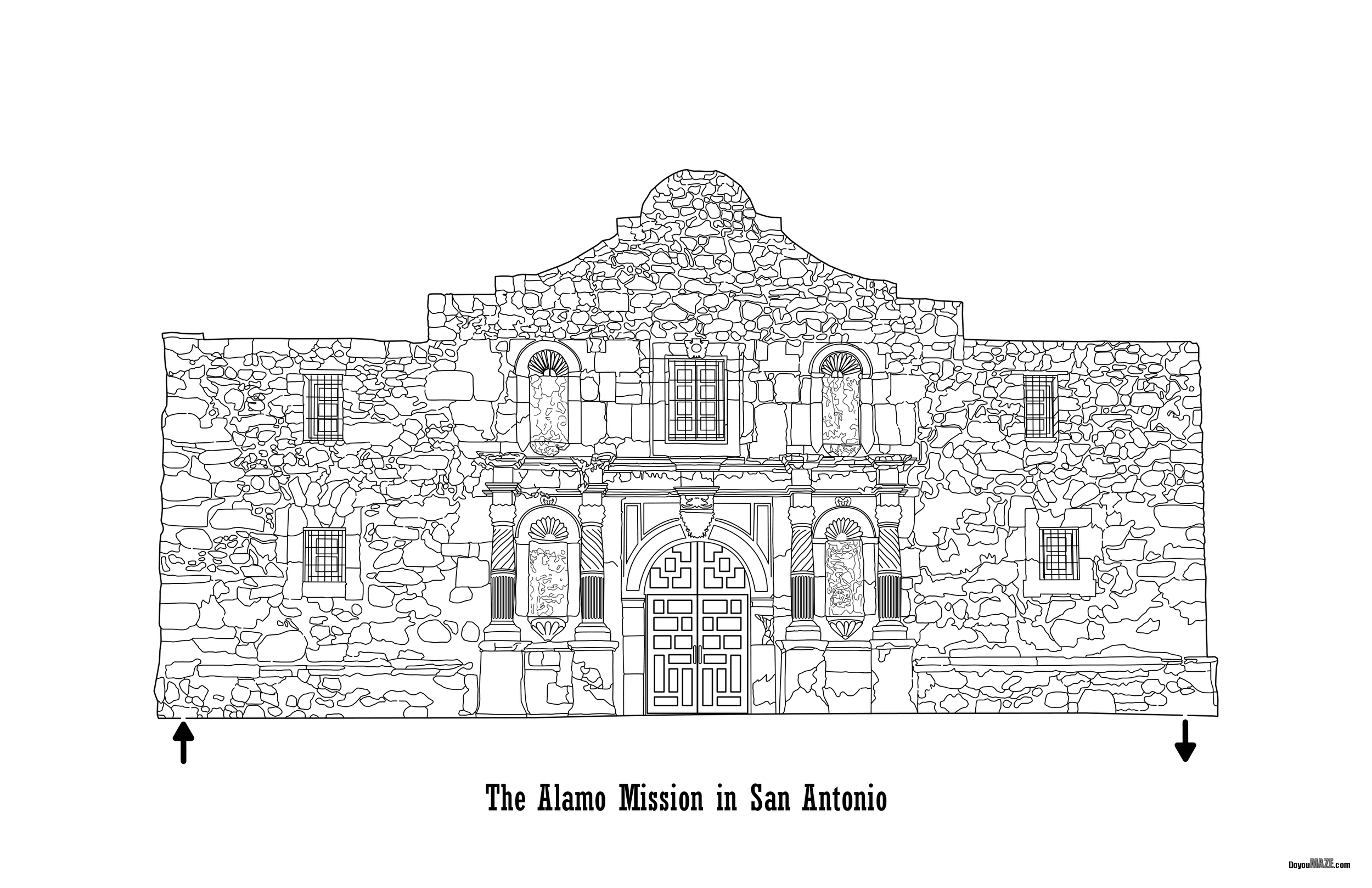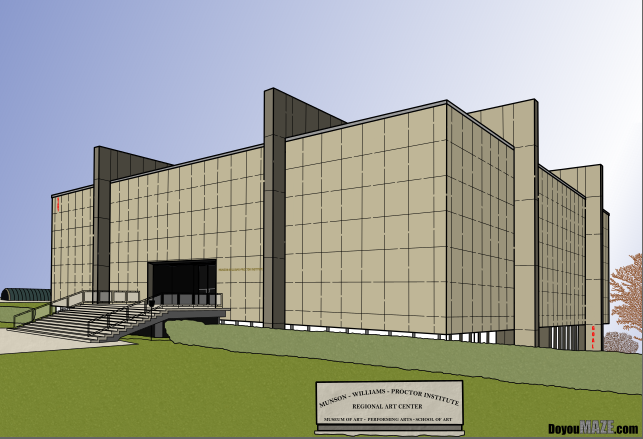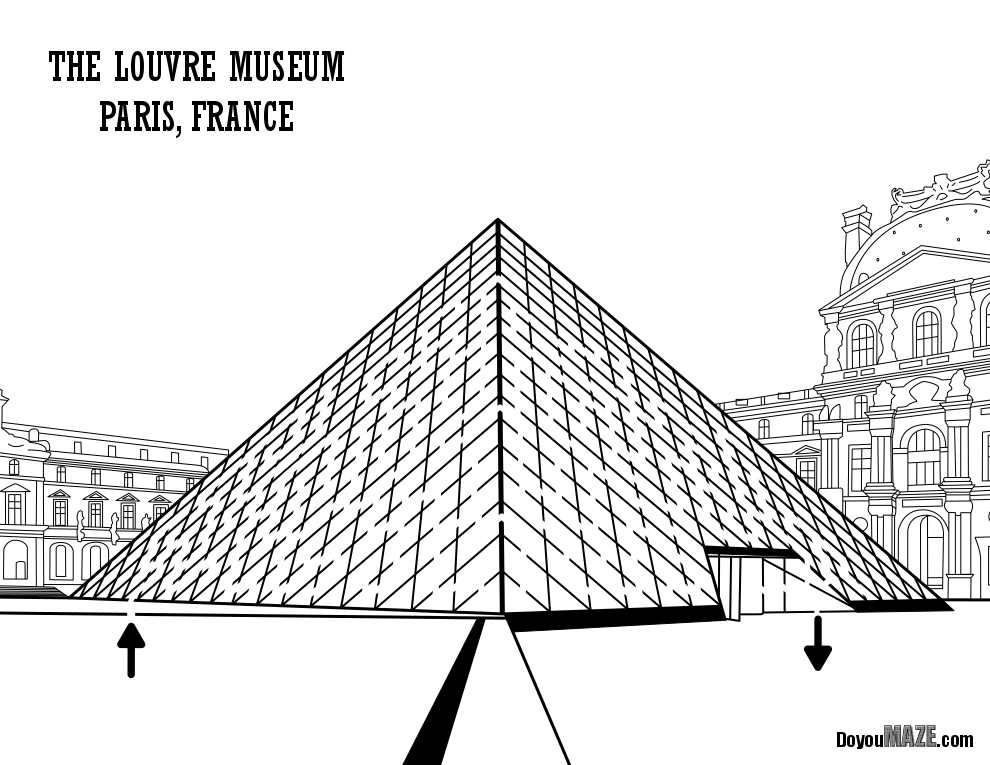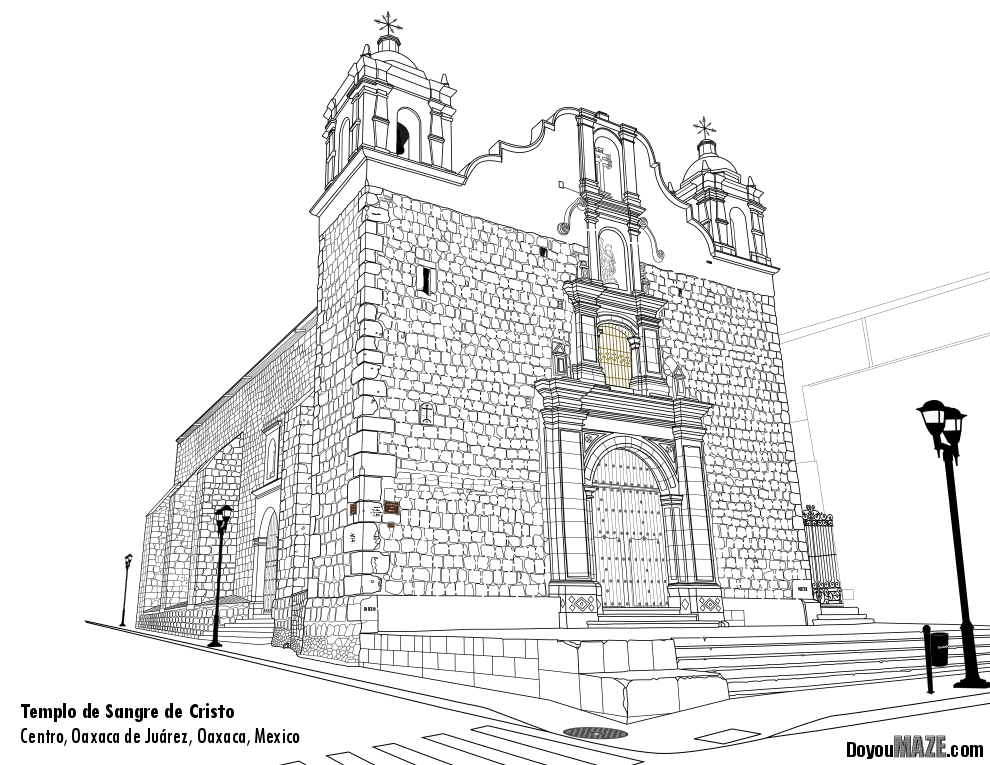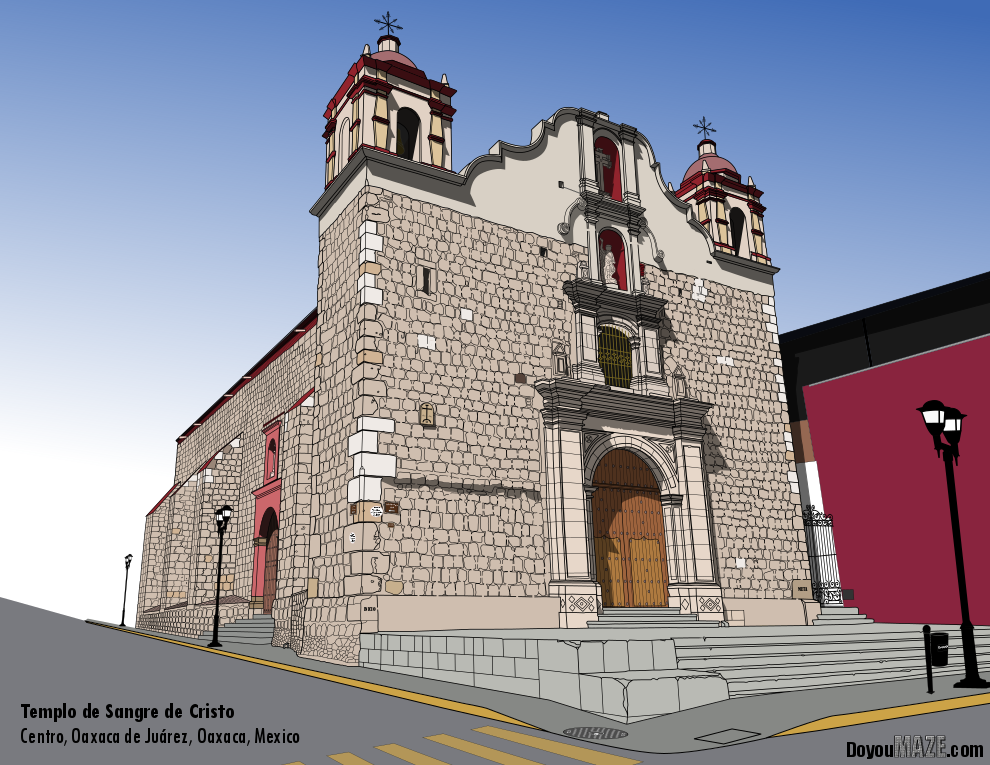I want to take a deeper look on creating mazes at different difficulty levels with a case study. I have looked at this topic before where I discussed ways to change the difficulty level of a maze. Here is some pre-reading if you want some background on the topic:
Maze Design Case Study - Designing a Grid Maze in Different Difficulty levels
Maze Construction - 5 Maze Design Decisions Make All the Difference
This version will take a specific maze and I will make in 3 different difficulty levels. I choose the Rock n Roll Hall of Fame Maze (my 2022 maze of the year) to work with, mostly done in black and white to more easily show the work, and zoomed in to focus on the maze portion more than overall picture. The maze is a bit longer and larger than I would like, but it works. All 3 options can be downloaded to make solving easier. The best way to experience and understand this post is to download each maze and try to solve it !
Option 1: Can you tell what difficulty level this is ? Try to solve half way to get an idea.
What did you notice ? Hopefully that this maze was relatively easy. Any incorrect branch was short (typically 3 panels) and had no branches off of it. There are no 3 choice blocks in the maze. It is not quite kids maze easy because the maze is too long…but a more compact version of this could be.
Option 2: Same deal. Try it. Go half way or farther this time.
What I hoped you noticed was this was a bit more difficult. Now, if you took a wrong branch, that branch also split in 2, so you got deeper into a bad pathway. But, I kept the branches relatively short, so things don’t get out of hand. I consider this medium difficulty.
Option 3: You know this one is the most difficult, so try to solve the entire maze this time.
In this maze I used almost all of the full picture and have branches off branches, longer branches, and some long wrong turns. There are also a few places where 3 options are available to move. This could be made even harder, but compared to options 1 & 2 this works.
Now, let’s get under the hood and make this a case study by marking the pathways based on what their purpose is from the designer.
Red - the pathway solution !
Blue - incorrect pathways
Purple - filler pathways that are not reachable by the maze solver
Green - incorrect pathways that branch from incorrect pathways (very wrong turns)
Orange - incorrect pathways added to fill in blank spaces (replaces purple filler in this example)
Option 1 with branches shown
Blue pathways are short (although there are many of them) and none of them branch out. All purple branches are unreachable and filler. This is what an easy maze looks like. You could remove the purple pathways, but it would make the maze look uneven and the pathway more obvious.
Option 2 with branches shown
Same solution, but some of the blue pathways branch out into additional options (shown in green). This is a medium difficulty. I kept the incorrect branches relatively short again. So, blue is a bad path, and green is a very bad path !
Option 3 with branches shown
The hard maze. All purple filler has been replaced and any pathway shown can be reached by the solver. Wrong pathways can be taken for longer (especially if you take the orange pathways at the top of the maze).
So that is 1 maze done in 3 difficulty levels, but all with the SAME correct solution !
So to summarize I used the following to change the difficulty of the maze:
The length of dead ends - How fast you know you have made an incorrect choice
Dead ends with branches - When you make a wrong turn are there multiple incorrect choices on that branch (branches off of branches)
Expanded pathway choices - Some intersections have multiple choices, instead of only 2
Unusable pathways - Filler sometimes was used to fill a maze out while keeping it at the desired difficulty level.
Choices Made - the more choices that need to be made, the more likely the solver makes a mistake.
Let’s look at that last item - choices made - with the same mazes but some data to back it up. In our easy maze example how many choices did the solver have to make ? 85 ! That explains why this wasn’t a kids maze. You would never have a child make that many choices (even an easy maze with 85 is pushing it!). Below I have labeled the 85 instances with yellow circles:
And now our hard version maze. The initial number of choices off of the main branch is actually less than the easy version - 79 (shown counted in yellow again), but those branches also have choices - 121 in fact (shown with aqua circles). So 200 total possible choices. However, the number of choices a solver makes will vary based on which decisions they make off the main branch. You would have to be terrible at solving mazes to make all 200 !
Good luck with your maze designs !
If you like reading content like this check out my master list of case studies:
A Collection of Maze Design Case Studies to Improve Your Mazes





